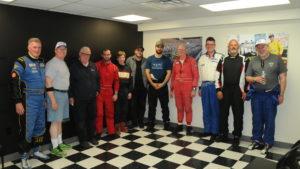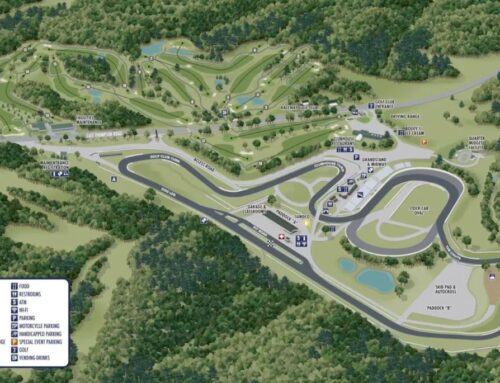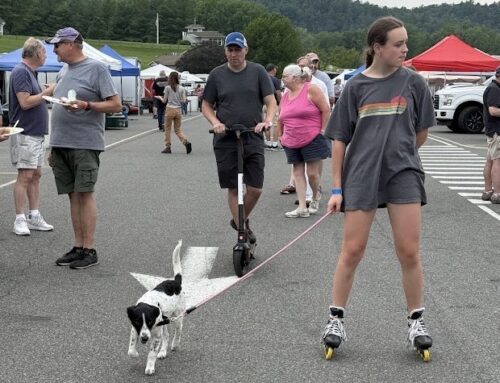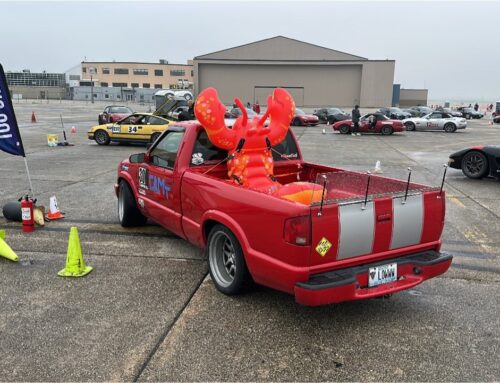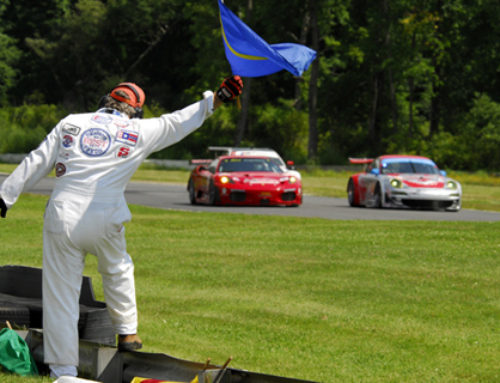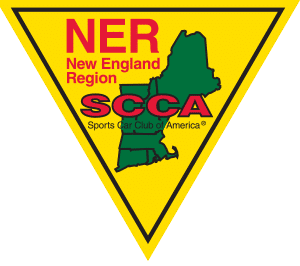
Written by Dick Pattulo
There are many myths about SCCA road racing. Dick Patullo connected with Frank Swartz, John Petillo, Larry Marks and Elizibeth Jolly to pull together the facts and help dispel some of the misconceptions about what it really takes to get on track for wheel-to-wheel road racing. Admittedly, the task of starting from nothing to being an active racer can be overwhelming, and does have it’s fair share of steps, but let’s break it down and dispel some of the rumors that might have you thinking you can’t even get started.
Myth One: Getting a SCCA competition license is hard and expensive.
Getting a license is not necessarily the first step in road racing, but for the sake of this article let’s address it first.
The normal process for obtaining a SCCA competition license is to apply for a novice permit and then attend a SCCA driver’s school. Once the school is successfully completed the novice permit is signed off as ready to race and becomes a novice license. With this you can enter any SCCA race other than the Majors. Then, after successfully completing 3 SCCA weekends, the license is upgraded to a full competition license. A novice permit is valid for 2 years and can be renewed if necessary, giving plenty of time to complete the process. To obtain a novice permit, there’s an application, a doctor’s physical, and a $150 fee.
New England Region has a spring school at Thompson, Washington DC region has one at Summit Point, and Steel Cities Region runs a couple of schools each year at Pitt Race. But that is just the traditional path. SCCA also offers an Alternate Drivers School for people with prior racing experience. These usually entail a bit of coaching and observation typically at a track test day. ADSs are available regularly before or during SCCA regional events at NJMP and New England Region events with our Club Racing Experience. In addition, there are private schools available. The one they run at Thompson Speedway is very reasonable.
NER’s Club Racing Experience is a good path if you are racing in any closed wheel race car, except for some of the fastest classes. CREs are scheduled as a run group on regular racing weekends. They provide about half the track time as a one-day school so most drivers need two weekends to fulfil the school requirements.
A full list of private schools and what part of the license requirements they fulfil are on the SCCA website here. When shopping for a pro school though more is not better. If your goal is to start in regional club racing, which is really where the action is here in New England, all you need is the school requirement satisfied. The requirements for going from a novice permit to a full competition license happens naturally as you enjoy racing.
Myth Two: The first thing you need to do is earn a racing license.
Getting a license is part of the process, but not necessarily the first step in the plan to go racing. Far too many people go off to a big pro school, earn a license there, and then a year later find they have not met the participation requirements to renew it and still don’t have a plan to for regularly participating in club racing events.
Instead, the first step should be figuring out and deciding what your racing goals are. This is where the conversations should begin. Racing goals include how often and at what level you want to race? How will your budget effect your goals? Who do you want to hang out with at the track? What kind of car do you want to be behind the wheel of, and how are you’re going to get it? Then lastly, how much support – both instructional and mechanical – will you need?

Step 1: Determine how to obtain a racecar. There are three options: Build, Rent, or Buy. Making this decision depends on resources and abilities. Do you have a tow vehicle, a trailer, a shop area, and tools to work on the car? How are your skills as a mechanic or as a fabricator?
Building is almost always more expensive and certainly more time consuming than buying a finished race car. Almost every race car you buy will have something you want or need to change, but that is a lot easier than building from scratch. Plus, it takes a lot of research, experience and know-how to correctly and safely build a purpose-built racecar.
If you do not have the infrastructure and will likely race just a few times a year, renting might be the best choice. Especially for someone very new to racing. Some classes are very popular for renting. Spec Miata and Spec Racer Fords are the most common, but there are rentals available for Formula Vee, B Spec and Touring Classes as well. Renting also gives the flexibility to try a few types of cars to find the one you like best.
That said, if you decide to go straight to buying a car, the big question is what class or kind of car to own. Many people love a particular brand of car and want to race that. Racing a less than popular car is a lot harder. Performance parts and setup advice is just harder to come by. When a Miata driver needs a part at the track, there are 40 possible people where you can borrow it from or get help. With an orphan car you are on your own. The key is deciding if your race car is a tool for racing, or a passion project. For the first race car, make it as easy as possible. I often tell people when picking a car, go to a race event and find the people you want to hang out and drink beer with. Then buy a car like theirs as they are the people you are going to lean on for advice.
Step 2: Picking your car class. Speaking of advice, the next factor in picking a car is understanding the support system for new racers. Here are a few classes new racers should consider when making the decision on which one to join.
Formula Vee (FV) is one of the oldest classes in the SCCA. It is also probably the lowest cost class for purpose-built cars in road racing today. FVs race throughout the world in some form or another. Formula Vee has enjoyed a rich 60-year history and is where some of racing’s biggest names got their start; drivers like Sergio Perez, Scott Dixon, Emerson Fittipaldi, Nikki Lauda, and New England’s own Sam Posey, to name just a few.
“Vees” are capable of up to 2G cornering forces and speeds upward of 120mph, with lap times similar to some V8 production cars. Powered by a Volkswagen air cooled 1200cc 4 cylinder flat-four engine and a swing axle transmission along with front suspension from a 60’s VW beetle, the class enjoys a steady rules package and prices have remained consistent with track ready cars starting at $7000 – $14000, depending on upgrades. Annual operating costs are around $1500 for engine rebuilds and $1000-$2000 for racing slicks. Fuel is about 6 gallons a weekend. With Vee’s only being around 5ft wide and under 11ft long they are easy to transport and store, with some competitors towing their race cars on open-wheel trailers with midsized sedans.
In the NER, the Northeast Formula Vee drivers’ group (NEFV.org) exists to help others take the step into Formula Vee racing. The NEFV has grown the FV class to be the largest racing class in the NER as well as the boasts the largest FV fields in the SCCA.
Spec E30. If you are looking for perhaps the most fun and most affordable racing class out there, you can stop looking once you hit Spec E30. Although the class has been around in other racing organizations for over 15 years, this is a relatively new class in NER SCCA. The class is built around the iconic 3 series that BMW built from 1984 through 1991. Any non-IX E30 shell is legal—sedan, coupe or convertible. You just need power from the hearty M20b25 motor. There are cars available for purchase in the $10,000 to $15,000 range. Cars will be in the $15,000 to $20,000 range to build depending if you do the labor or a shop builds it. A donor car should be in the $5,000 range then add $3,000 for a cage, $600 for the spec Ground Control suspension conversion kit, $400 for camber plates, $250 for the Spec exhaust, $2,000 to $3,000 for safety equipment and $2,500 for rims and tires. Consumables are very reasonable. Oil should be changed every 2 to 3 race weekends. Front brake rotors and pads normally last 2 to 3 race weekends. You should get a full season out of rear rotors and pads. Transmission and rear differential fluid should be changed once a season. If you use FCP Euro’s lifetime warranty program, you can end up spending almost nothing on consumables. The cars are not complicated to work on. You can handle almost anything yourself.
Spec E30 cars are very fun to drive. Visibility is great, and the cars are not difficult to control. The racing is typically close, as the cars are generally pretty similar in horsepower and torque. However, the best thing about the class is the people. There is always someone to help in the paddock with issues with your car or discuss how to improve your racing. Spec E30 is grassroots, entry level, affordable racing at its finest. The class is growing rapidly in NER SCCA.
B-Spec. A class that has been doing well nationally, as well as regionally, as of late is B-Spec. These are small front wheel drive cars such as Minis, Mazda 2, Chevy Sonic and Toyota Yaris with limited modifications.
Data supplied by Frank Schwartz of Grass Paddock Motorsports demonstrates that entry level racing over the past 30 years has roughly followed typical inflation estimates. In 1990 he built and campaigned a 10 year old ITC Ford Fiesta and some 30 years later in 2020 he built and campaigned a 10 year old B-Spec Mini Cooper. The Fiesta build costed roughly $5000 and the Mini cost roughly $10,500 (a detailed build is listed on his blog). That increase matches inflation perfectly. Schwartz explained, “The B-Spec car is faster and more reliable than the IT car, as it was prone to constant maintenance and repairs. As a bonus, most B-Spec cars are nationally competitive which is not something you could say about the ITC Fiesta.”
“The real issue today facing people who want to get started in racing is time,” adds Schwartz. “Costs have approximately kept pace with inflation, but people are much busier today. B-Spec cars are basically like big Lego kits since allowable changes are limited, the development work has been done, and anyone can follow the recipe for building a pointy end car. Aside from the cage itself, a car can be built in 2 weekends. If B-Spec cars are the Ikea of racing, the combination of readily available chassis and the explosion of arrive-and-drive rental opportunities have fueled the class’s meteoric rise.”
Combining the reasonable cost of building a B-Spec car with the readily available inventory of rentals from places like GABB Racing in the Northeast, GPM in the Midwest and Southeast and Offline Racing on the west coast, the class has seen large growth. From 2018, when the participation was low enough the club considered cancelling it, to 2021 where the class was firmly in the top 5 largest SCCA classes, B-Spec continues to grow. In 2021 61 cars took to the track at Indy for the Runoffs and the class has been top 3 in attendance for the past few Championship races. 2023 broke the class record with new car builds and B-Spec is now firmly entrenched as a Top 5 class in entries.
The case for B Spec is convincing however if you are not a fan of the small front wheel drive cars, Touring 4 or 3 does offer more variety, but the class sizes are more limited in the Touring fields.

Steve Introne and JB Swan documented the build of their Mini Cooper and Chevy Sonic B-Spec cars.
So You Wanna Build a B-Spec: Part 1
Building a B-Spec: Part 2
B-Spec Build: Starting Out Strong
IT 7: I must mention IT 7 as an affordable class. IT 7 is a class for 1979-1985 Mazda RX7s prepared to Improved Touring specifications. This used to be a very popular class in the Southeast and Midwest but has dropped off in participation. It has found a home, however, here in New England. The class runs on a harder Nitto NT01 tire that is a big cost saving both in price and longevity. Because it is an older class, there are bargains available for built cars usually between $3K – $8K depending on condition. These older carbureted cars take a little more maintenance however it is possible to make them reliable. I raced 6 weekends this year and had only one session where I did not finish. The IT 7 competitors are a close knit group who usually paddock together and are willing to offer help.
Spec Racer Ford/Spec Miata: As mentioned earlier, there are large, dedicated race shops organized around providing on-track race prep and service for these spec classes. SRF has an SCCA Enterprises CSR (Customer Service Rep) at every event. In New England, that’s Motion Dynamics. And there’s usually race-prep shops like FlatOut Motorsports, that offer the same services for SM cars, in each paddock as well. These allow drivers to do everything from “arrive-and-drive”, where the shop stores, transports, maintains and preps the cars, and the driver simply shows up and races; to simply being an on-site parts and service supplier for repairs. Drivers can utilize these for their own cars, or use shop-owned cars through a rental program.
For new racers, having the support of a dedicated race prep team to assist with getting set up on grid, checking pressures and making car adjustments, providing feedback on racelines and racecraft, can be worth the added expense as you start out. Individual budgets will always be a factor, but both of these classes provide an easy transition as drivers develop from requiring full support to running events completely independently.

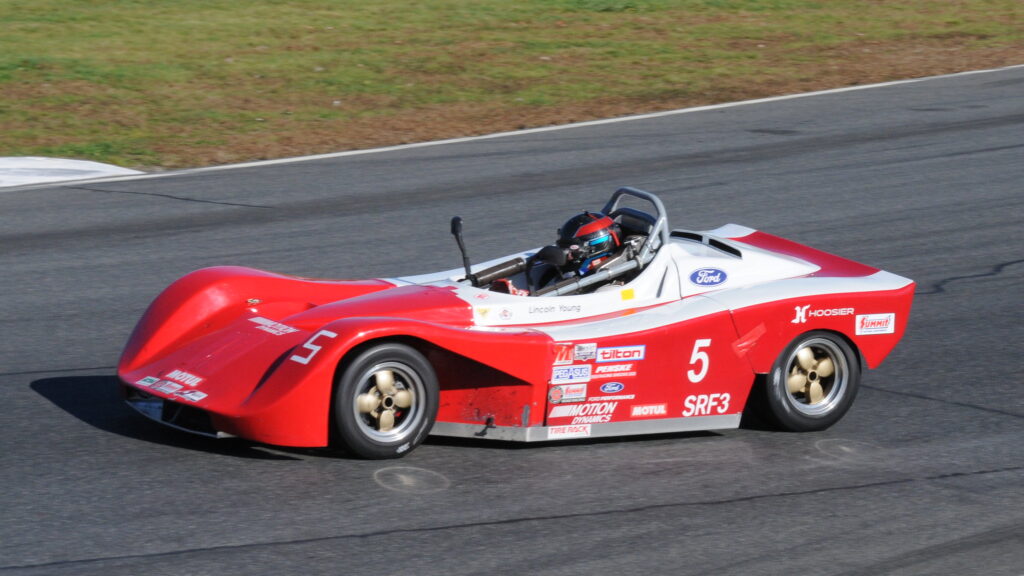
Myth 3: SCCA racing is very complicated.
Well, maybe this is not a myth. One way to make your entry into SCCA racing a lot less intimidating is to visit, volunteer and get involved at racing events before attempting to start racing yourself. SCCA club racing relies on lots of volunteer workers to make these weekends happen. NER even has a program for new workers where the region pays the membership fees for you! Become a corner worker, grid marshal, timing and scoring worker, or tech inspector. There are plenty of ways to get up close to the action and learn all the ins and outs of how road racing events operate. A few weekends volunteering quickly provides valuable insight that will smooth the transition to the first weekends behind the wheel.
Bottom line – it’s not as hard, complicated or difficult as some might imagine it to be to get out on track. If you’re interested, or have questions, reach out to any of the NER Region or Road Racing contacts and we’ll be happy to help get you on the way to having #funwithcars.

